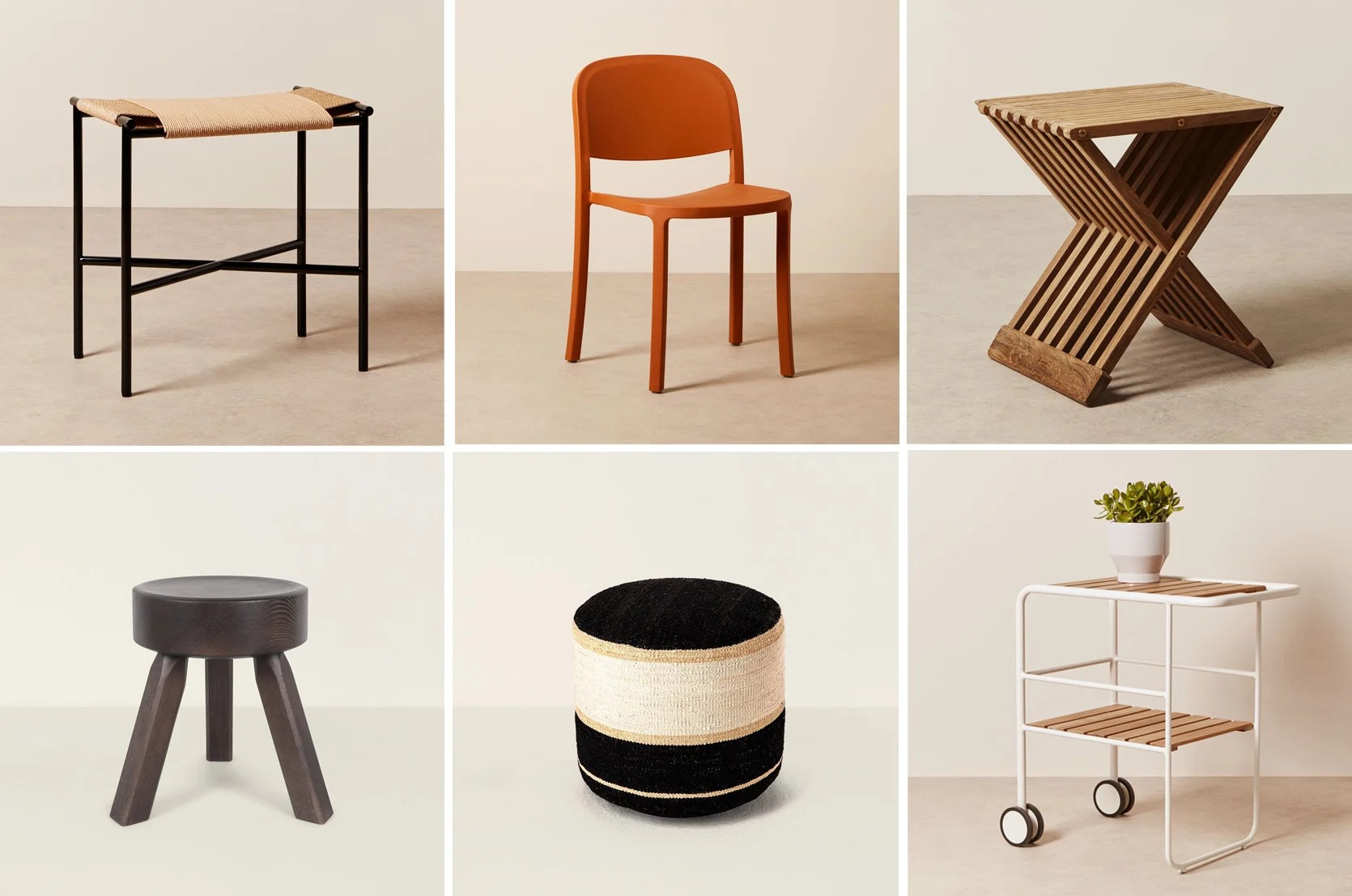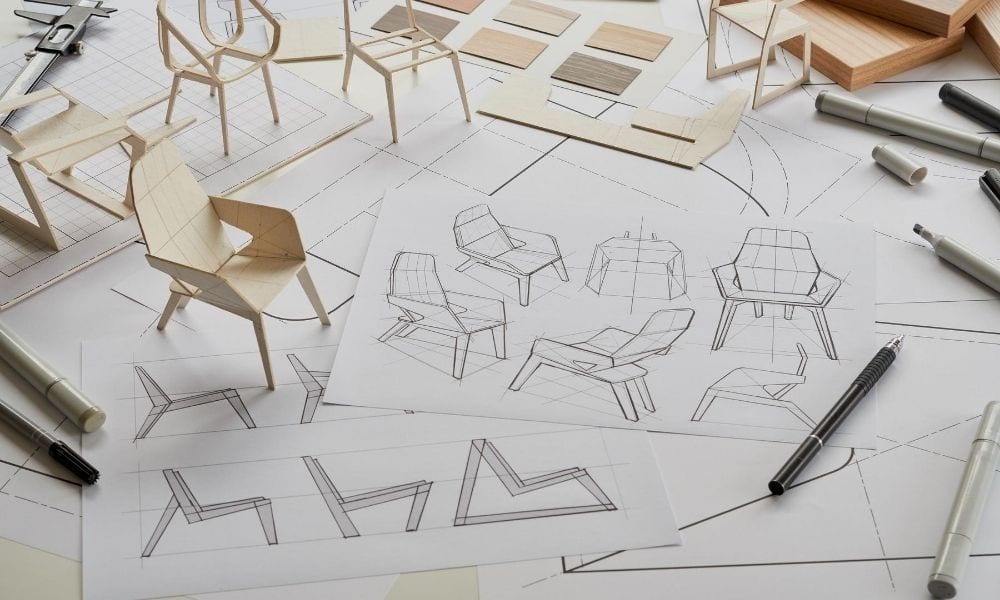Making sustainable kids' furniture involves using eco-friendly materials, processes, and designs to create durable and safe pieces that minimize environmental impact.
Sustainable kids' furniture offers numerous benefits, including reducing carbon footprint, promoting healthier indoor air quality, and supporting ethical and responsible manufacturing practices. Historically, furniture production has contributed to deforestation, pollution, and resource depletion, making sustainable alternatives increasingly important.
To delve deeper into the topic, this article explores the key considerations, materials, and techniques involved in making sustainable kids' furniture, providing practical guidance for parents, designers, and manufacturers alike.
Sustainable Kids' Furniture
Creating sustainable kids' furniture involves a multifaceted approach, encompassing various aspects:
- Materials: Eco-friendly options like bamboo, reclaimed wood, and organic cotton
- Finishes: Non-toxic, water-based paints and stains
- Durability: Sturdy construction and high-quality materials for longevity
- Safety: Rounded edges, no sharp corners, and stable designs
- Ethics: Fair labor practices and responsible manufacturing
- Design: Space-saving, multi-functional pieces for growing kids
- Certifications: Look for certifications like FSC (Forest Stewardship Council) for sustainable forestry
- Maintenance: Easy-to-clean surfaces and materials that resist wear and tear
- Disposal: Consider furniture made from recyclable or biodegradable materials
These aspects are interconnected, contributing to the overall sustainability of kids' furniture. By prioritizing eco-friendly materials, safe designs, and ethical practices, we can create healthy and sustainable environments for our children while preserving the planet for future generations.
Materials
In the context of sustainable kids' furniture, the choice of materials is paramount. Eco-friendly options like bamboo, reclaimed wood, and organic cotton play a significant role in reducing the environmental impact of furniture production and promoting healthier indoor environments for children.
Bamboo, a rapidly renewable resource, boasts exceptional strength and durability, making it an ideal choice for kids' furniture that can withstand rough play and frequent use. Reclaimed wood, salvaged from old buildings or fallen trees, minimizes waste and conserves natural resources. Organic cotton, grown without harmful pesticides or fertilizers, ensures a healthier indoor environment and supports ethical farming practices.
By prioritizing these eco-friendly materials, manufacturers can create sustainable kids' furniture that not only meets safety and durability standards but also contributes to a greener planet. Parents can make informed choices, knowing that their children's furniture is made with materials that prioritize their health and well-being while preserving the environment for future generations.
Finishes
In the realm of sustainable kids' furniture, finishes play a crucial role in safeguarding children's health and the environment. Non-toxic, water-based paints and stains are essential components of sustainable furniture, offering numerous advantages over traditional finishes.
Conventional finishes often contain volatile organic compounds (VOCs), which can emit harmful fumes that contribute to indoor air pollution and pose health risks, especially for children with sensitive respiratory systems. Non-toxic, water-based paints and stains, on the other hand, are free of harmful chemicals, ensuring a healthier indoor environment for children.
Moreover, water-based finishes have a lower environmental impact compared to solvent-based finishes. They produce fewer VOCs during application and cleanup, reducing air pollution and protecting ecosystems. Additionally, water-based finishes require less energy to dry, conserving resources and minimizing greenhouse gas emissions.
By choosing non-toxic, water-based paints and stains for kids' furniture, manufacturers and parents can create a healthier and more sustainable environment for children. These finishes contribute to improved indoor air quality, reduce environmental pollution, and support responsible manufacturing practices.
Durability
In the context of sustainable kids' furniture, durability plays a pivotal role, ensuring furniture can withstand the rigors of childhood and last for generations to come. Sturdy construction and high-quality materials are essential components of sustainable furniture, offering numerous benefits.
- Resilience to wear and tear: Durable kids' furniture can endure the daily wear and tear of active children, reducing the need for frequent replacements and minimizing waste.
- Safety: Sturdy construction helps prevent accidents, ensuring furniture is stable and unlikely to tip over or collapse, enhancing children's safety.
- Investment for the future: Durable furniture can be passed down through siblings or even generations, becoming a cherished family heirloom while reducing the environmental impact of multiple purchases.
- Environmental sustainability: By extending the lifespan of kids' furniture, we reduce the need for raw materials and manufacturing processes, conserving resources and minimizing waste.
Prioritizing durability in kids' furniture aligns with the principles of sustainability, creating furniture that is not only long-lasting but also environmentally responsible. By choosing furniture made with sturdy construction and high-quality materials, parents and manufacturers can contribute to a more sustainable future for children and the planet.
Safety
Within the realm of sustainable kids' furniture, safety is paramount. Rounded edges, no sharp corners, and stable designs are essential components, contributing to the well-being of children and the overall sustainability of furniture.
Sharp corners and edges pose a significant safety hazard for children, increasing the risk of cuts, bruises, and more severe injuries. Rounded edges and corner protectors effectively mitigate these risks, creating a safer environment for kids to play and explore.
Stable designs are equally important, preventing furniture from tipping over and causing accidents. Sturdy construction, a wide base, and anti-tip devices ensure stability, safeguarding children from potential harm.
Moreover, safety features like rounded edges and stable designs promote long-term sustainability. By preventing accidents and injuries, they reduce the need for repairs or replacements, extending the furniture's lifespan and minimizing waste.
In conclusion, prioritizing safety in kids' furniture through rounded edges, no sharp corners, and stable designs not only protects children but also contributes to sustainability. It reduces accident risks, ensures furniture longevity, and aligns with the principles of creating a healthier and more sustainable environment for future generations.
Ethics
In the context of sustainable kids' furniture, ethics play a crucial role, encompassing fair labor practices and responsible manufacturing. These ethical considerations extend beyond environmental sustainability, ensuring that the furniture is produced in a way that respects human rights, promotes social justice, and minimizes negative environmental impacts.
- Fair wages and working conditions: Ensuring that workers involved in the manufacturing process are treated fairly, with decent wages, safe working conditions, and no forced or child labor.
- Respect for local communities: Engaging with and respecting local communities, minimizing disruptions, and contributing to local development.
- Transparency and traceability: Maintaining transparency throughout the supply chain, enabling consumers to make informed choices about the products they purchase.
- Environmental responsibility: Implementing sustainable practices throughout the manufacturing process, minimizing waste, reducing pollution, and conserving resources.
By prioritizing ethics in kids' furniture production, manufacturers demonstrate a commitment to social and environmental responsibility. They contribute to a fairer and more sustainable world while ensuring that the furniture they produce meets the highest standards of quality and integrity.
Design
In the context of sustainable kids' furniture, design plays a crucial role in maximizing functionality, minimizing waste, and promoting sustainability throughout the product's lifecycle.
- Space optimization: Space-saving designs, such as convertible cribs that transform into toddler beds, utilize vertical space efficiently, reducing the need for multiple furniture pieces and minimizing clutter.
- Multi-functionality: Multi-functional pieces, like storage ottomans that double as seating, maximize space utilization and reduce the need for additional storage units, minimizing resource consumption.
- Adaptability: Adaptable designs, such as adjustable desks and chairs that grow with the child, extend the furniture's lifespan, reducing the need for frequent replacements and minimizing waste.
- Durability: Durable designs, constructed with high-quality materials and sturdy joinery, withstand the rigors of childhood, ensuring longevity and reducing the need for repairs or replacements, thus promoting sustainability.
By incorporating these design principles, manufacturers can create sustainable kids' furniture that meets the evolving needs of growing children while minimizing environmental impact and promoting a more sustainable lifestyle.
Certifications
Certifications play a pivotal role in verifying the sustainability of kids' furniture. The Forest Stewardship Council (FSC) certification, for example, ensures that wood used in furniture production originates from responsibly managed forests, promoting sustainable forestry practices that protect biodiversity, soil health, and water quality.
By choosing FSC-certified kids' furniture, consumers can be confident that they are supporting responsible forestry practices and reducing their environmental impact. FSC certification helps prevent deforestation, protects wildlife habitats, and ensures fair labor practices throughout the supply chain.
Incorporating FSC-certified materials into kids' furniture production is a tangible way to promote sustainability. It demonstrates a commitment to ethical sourcing and responsible manufacturing, contributing to a more sustainable future for both children and the planet.
Maintenance
In the context of sustainable kids' furniture, maintenance plays a crucial role in extending the furniture's lifespan and reducing its environmental impact. Easy-to-clean surfaces and materials that resist wear and tear contribute to sustainability in several ways:
- Reduced need for harsh cleaning chemicals: Easy-to-clean surfaces require less frequent and less intensive cleaning, reducing the need for harsh chemicals that can harm the environment and children's health.
- Increased durability: Materials that resist wear and tear are less likely to become damaged or stained, extending the furniture's lifespan and reducing the need for replacements, which conserves resources and minimizes waste.
- Improved hygiene: Easy-to-clean surfaces promote better hygiene, as dirt and bacteria can be easily removed, creating a healthier environment for children.
- Cost savings: Furniture that is easy to maintain and durable requires less frequent repairs or replacements, leading to long-term cost savings for families.
By prioritizing easy-to-clean surfaces and materials that resist wear and tear, manufacturers and parents can contribute to more sustainable kids' furniture that is not only durable and hygienic but also environmentally friendly and cost-effective.
Disposal
In the realm of sustainable kids' furniture, disposal plays a crucial role in minimizing environmental impact and promoting a circular economy. By choosing furniture made from recyclable or biodegradable materials, manufacturers and parents can contribute to a more sustainable future for both children and the planet.
- Reduced landfill waste: Furniture made from recyclable materials, such as metal or plastic, can be diverted from landfills, conserving valuable space and reducing the environmental burden of waste disposal.
- Conservation of natural resources: Biodegradable materials, such as bamboo or cork, decompose naturally over time, returning nutrients to the soil and minimizing the need for raw material extraction.
- Lower carbon footprint: Recycling and biodegradation processes typically have a lower carbon footprint compared to manufacturing new furniture from virgin materials, reducing greenhouse gas emissions.
- Support for circular economy: By incorporating recyclable and biodegradable materials into kids' furniture, manufacturers promote a circular economy, where materials are reused and repurposed instead of being discarded.
By prioritizing disposal considerations in kids' furniture design and manufacturing, we can create a more sustainable and environmentally friendly environment for future generations.
FAQs on Sustainable Kids' Furniture
This section addresses frequently asked questions to provide comprehensive information on sustainable kids' furniture.
Question 1: What are the key considerations for making sustainable kids' furniture?
Answer: Sustainable kids' furniture prioritizes eco-friendly materials, non-toxic finishes, durability, safety, ethics, space-saving designs, certifications, easy maintenance, and responsible disposal.
Question 2: Why is durability important in kids' furniture sustainability?
Answer: Durable furniture withstands wear and tear, reducing the need for frequent replacements, conserving resources, minimizing waste, and enhancing safety.
Question 3: What role do certifications play in sustainable kids' furniture?
Answer: Certifications like FSC for sustainable forestry verify the responsible sourcing of materials, ensuring environmental protection and ethical practices.
Question 4: How does maintenance contribute to kids' furniture sustainability?
Answer: Easy-to-clean surfaces and wear-resistant materials reduce the need for harsh chemicals, extend furniture lifespan, improve hygiene, and save costs.
Question 5: What are the benefits of using recyclable or biodegradable materials in kids' furniture?
Answer: Recyclable materials reduce landfill waste, while biodegradable materials decompose naturally, conserve resources, lower carbon footprint, and support a circular economy.
Question 6: How can parents make informed choices when purchasing sustainable kids' furniture?
Answer: Look for certifications, consider materials, finishes, durability, safety features, maintenance requirements, and disposal options to ensure environmental and ethical standards are met.
By understanding these key aspects, manufacturers and parents can contribute to a more sustainable future for kids' furniture, creating healthier and environmentally friendly spaces for children.
In the next section, we will explore practical tips for making sustainable kids' furniture, empowering individuals to make informed choices and contribute to a greener planet.
Sustainable Kids' Furniture
Incorporating sustainability into kids' furniture requires thoughtful choices and practical implementation. Here are five tips to guide you:
Tip 1: Choose Sustainable MaterialsOpt for eco-friendly materials like bamboo, reclaimed wood, organic cotton, and natural rubber. These materials minimize environmental impact, promote healthier indoor air quality, and support ethical practices.Tip 2: Prioritize DurabilityInvest in furniture made from durable materials and sturdy construction. This ensures longevity, reduces waste, and enhances safety by preventing accidents caused by unstable or damaged furniture.Tip 3: Select Non-Toxic FinishesUse non-toxic, water-based paints and stains that are free of harmful VOCs (volatile organic compounds). These finishes create a healthier indoor environment for children and reduce air pollution.Tip 4: Consider Multi-Functional DesignsChoose furniture that serves multiple purposes, such as storage ottomans that double as seating or convertible cribs that transform into toddler beds. This optimizes space, reduces clutter, and minimizes the need for additional purchases.Tip 5: Look for CertificationsSeek certifications like FSC (Forest Stewardship Council) for wood products to ensure responsible forestry practices. Certifications verify that materials are sourced from sustainably managed forests, protecting biodiversity and ecosystems.SummaryBy implementing these tips, you can contribute to a more sustainable future for kids' furniture. By prioritizing eco-friendly materials, durability, non-toxic finishes, multi-functional designs, and responsible sourcing, we can create healthier and more sustainable environments for children while preserving our planet for generations to come.Conclusion
Creating sustainable kids' furniture is a crucial step towards fostering a healthier and more sustainable future for both children and the planet. By embracing eco-friendly materials, prioritizing durability, choosing non-toxic finishes, opting for multi-functional designs, and seeking certifications, we can create furniture that is not only safe and stylish but also environmentally responsible.
Investing in sustainable kids' furniture is an investment in our children's well-being and the preservation of our planet. By making informed choices and supporting manufacturers who prioritize sustainability, we can create a brighter future where children can thrive in healthy and sustainable environments.
Unveil The Secrets: Cassper Nyovest's Net Worth Journey
Unveiling The Enigma: Alan Silva's Mysterious Muse
Unveiling The Mystery: Discover The Age Of Toto Wolff's Son



ncG1vNJzZmiZo5%2BupLeRZ5imq2NjsaqzyK2YpaeTmq6vv8%2Bamp6rXpi8rnvHqK5mrJ9iuqK3xGaqrquklravrcGlnGajmZnAbrLUq6WirKWnsm%2B006aj